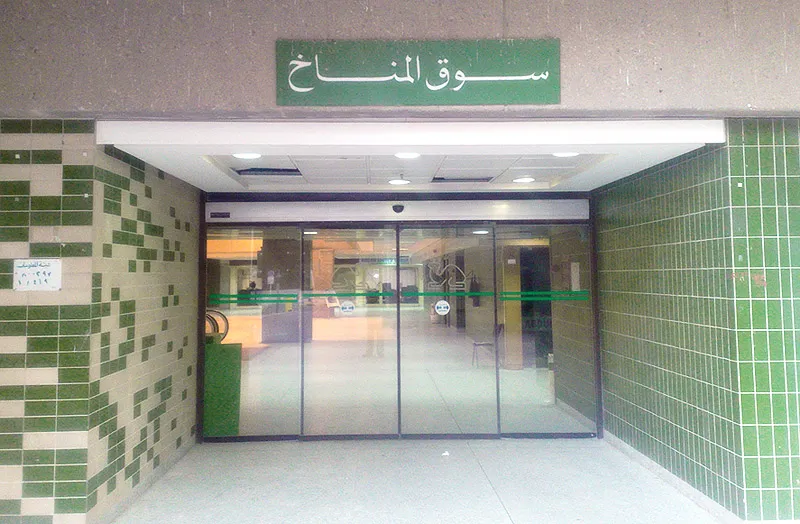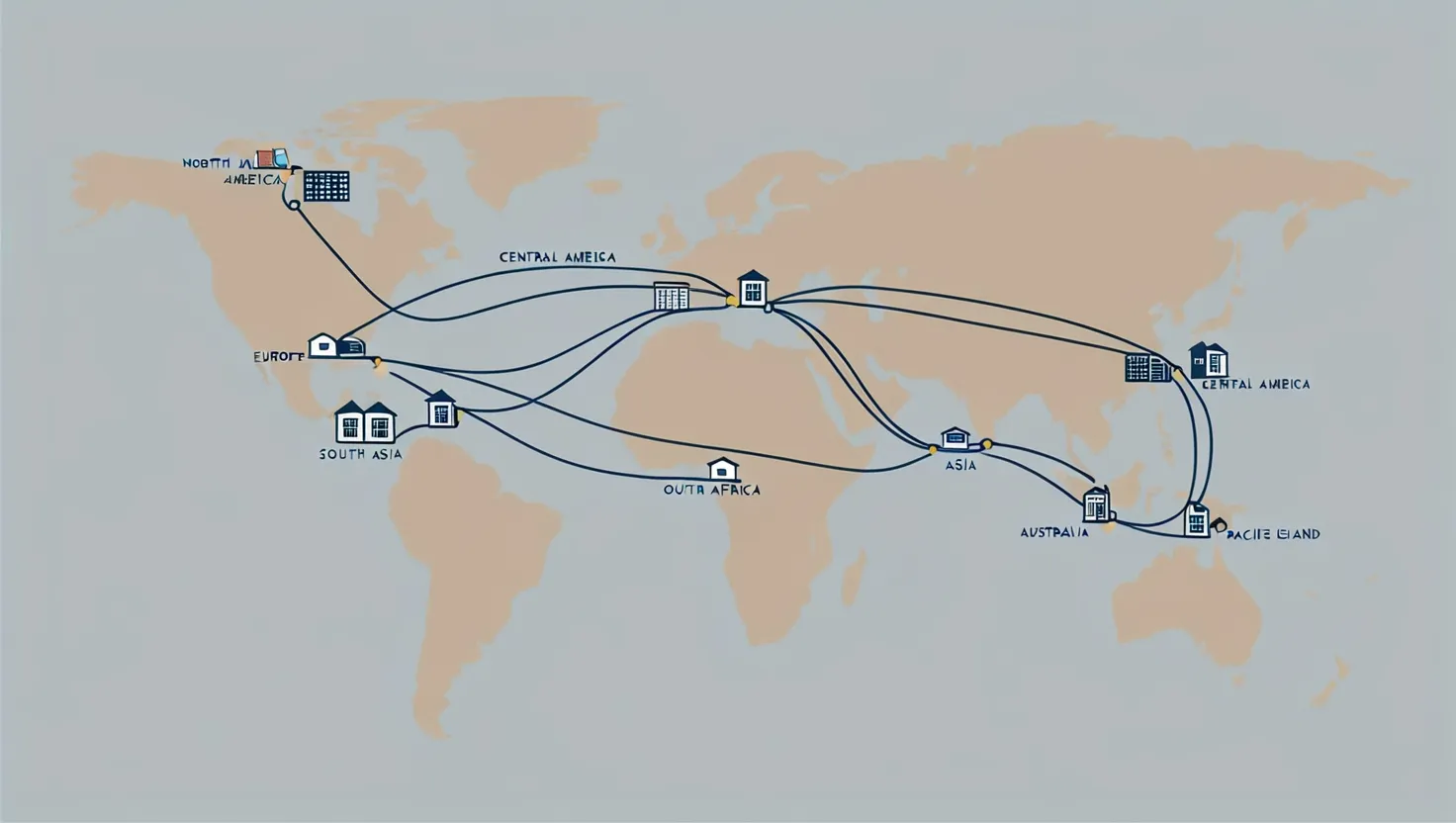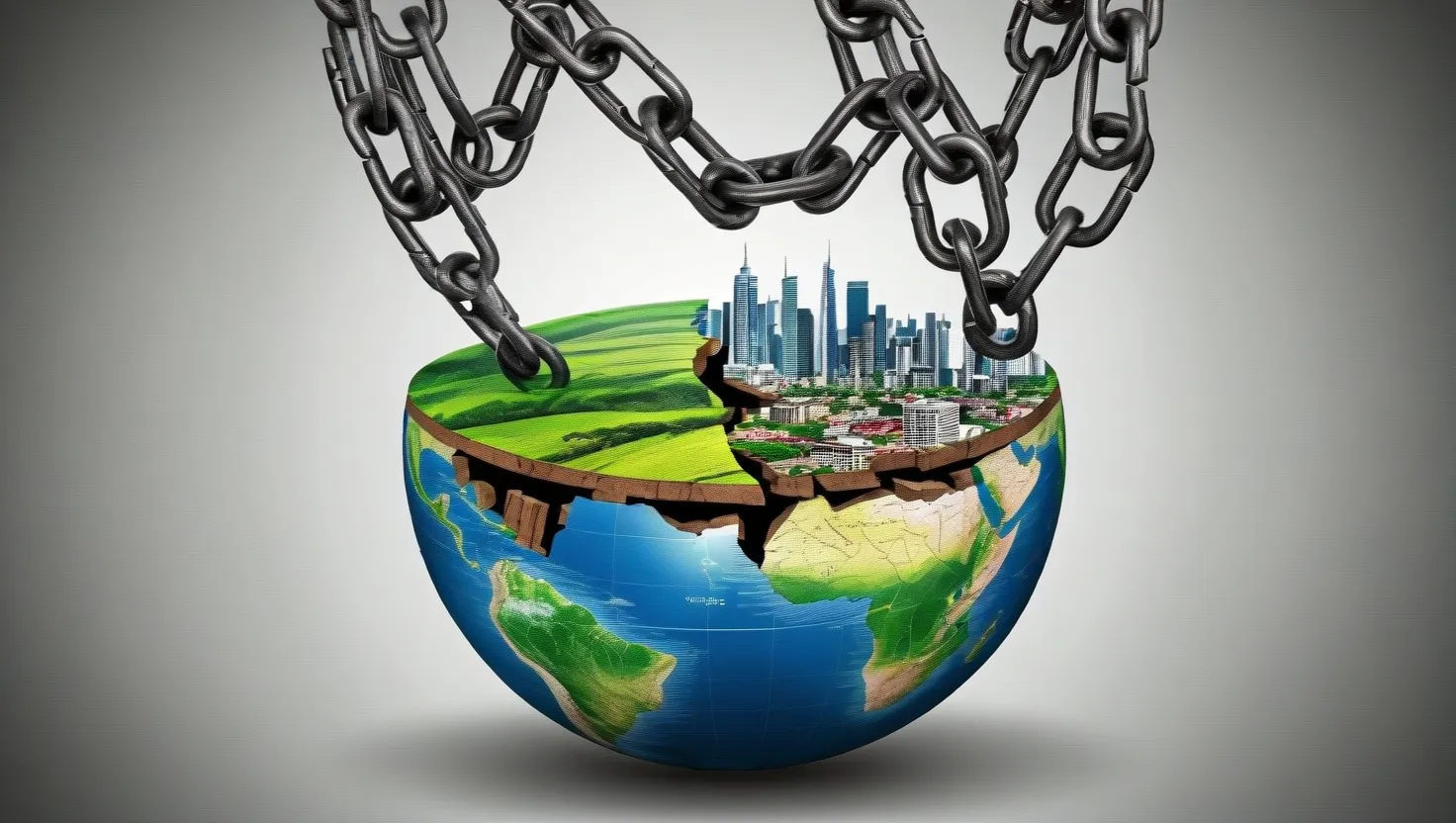In the early 20th century, Kuwait was a small, quiet nation on the Persian Gulf, its economy primarily driven by pearl diving and fishing. However, everything changed on February 22, 1938, when oil was discovered. This discovery was nothing short of a jackpot, propelling the nation into an era of unprecedented wealth. With oil reserves exceeding 100 billion barrels, Kuwait quickly became one of the world's richest countries.
This newfound oil wealth transformed Kuwait's economy and society. The sudden influx of money led to rapid modernization, with new infrastructure, schools, and hospitals being built almost overnight. The standard of living for many Kuwaitis improved dramatically. However, this sudden wealth also laid the groundwork for one of the most spectacular stock market bubbles in history.
The stage was set for a financial drama that would unfold over the next several decades. As oil revenues continued to pour in, the Kuwaiti government and its citizens sought ways to invest their newfound fortunes. This quest for investment opportunities would eventually lead to the creation of the Souk Al-Manakh, a stock market that would rise to dizzying heights before crashing down with devastating consequences.
Oil Wealth and Economic Boom
The discovery of oil in Kuwait in 1938 marked the beginning of an economic transformation that would unfold over the following decades. By the 1960s, Kuwait's oil production had accelerated dramatically. The country, once known for its modest pearl diving industry, was now awash with petrodollars. This surge in wealth was not just limited to a handful of elite families but spread across a broader segment of Kuwaiti society, creating an entirely new class of wealthy citizens.
This oil boom brought about rapid urbanization and modernization. The skyline of Kuwait City transformed with the construction of modern skyscrapers, luxury hotels, and sprawling shopping malls. Public services improved, with new schools, hospitals, and roads being built at an unprecedented pace. Kuwaitis enjoyed a high standard of living, with substantial government subsidies and benefits funded by oil revenues.
The influx of oil money also led to a booming economy. With so much cash flowing into the country, Kuwaitis were eager to invest their wealth. Traditional investments, such as real estate, were soon supplemented by more modern financial opportunities. This quest for investment vehicles set the stage for the creation of an official stock market, known as the Borsa, in 1977.
However, the Borsa was tightly controlled and dominated by the country's elite, who traded large blocks of stock among themselves, leaving smaller investors frustrated and looking for alternatives. This desire for more accessible investment opportunities led to the creation of a parallel, less regulated stock market, the Souk Al-Manakh, which would soon become the focal point of one of the greatest financial bubbles in history.
Formation of the Borsa
In 1977, as Kuwait’s wealth continued to burgeon, the government decided to establish an official stock market to channel the nation’s growing investment appetite. This market, known as the Borsa, was intended to provide a structured and regulated platform for trading shares of Kuwaiti companies. It represented a step toward modernizing Kuwait’s financial system and creating opportunities for citizens to invest their newfound oil wealth.
However, the reality of the Borsa was quite different from its promise. The market was tightly controlled by the country’s elite, who dominated trading activities. Large blocks of shares were exchanged primarily among wealthy families and high-ranking officials, effectively sidelining smaller investors. This exclusivity frustrated many Kuwaitis, who felt shut out of the lucrative opportunities that the Borsa presented.
The Borsa also faced regulatory constraints. The Kuwaiti government, led by the royal Sheikh, imposed strict standards on which companies could list on the exchange. The fear of uncontrolled speculation and market instability meant that new initial public offerings (IPOs) were rare. As a result, the Borsa featured a limited selection of stocks, making it less attractive to the broader population eager to invest.
Dissatisfaction with the Borsa’s exclusivity and limited offerings grew. Kuwaitis yearned for a more inclusive and dynamic market where they could invest more freely. This led to the creation of an alternative, the Souk Al-Manakh, in 1978. Unlike the Borsa, the Souk Al-Manakh was an over-the-counter market with far fewer restrictions, offering a broader range of investment opportunities. It quickly became the go-to place for Kuwaitis looking to invest outside the confines of the official exchange, setting the stage for the meteoric rise and eventual collapse of one of history’s most extraordinary stock market bubbles.
Rise of the Souk Al-Manakh
In 1978, in response to the Borsa's limitations and exclusivity, the Souk Al-Manakh was born. This new market offered a stark contrast to the tightly regulated Borsa. It allowed trading in non-Kuwaiti companies and was far more accessible to the average investor. The name "Souk Al-Manakh," which translates to "the market at the resting place for camels," hinted at its more informal and open nature.
The Souk Al-Manakh quickly gained popularity among Kuwaitis who had been frustrated by their exclusion from the Borsa. Here, they found an opportunity to invest in a wide range of companies without the stringent regulations that characterized the official stock market. This inclusivity attracted a diverse group of investors, from small-time traders to affluent businessmen.
The timing of the Souk Al-Manakh's rise could not have been better. The late 1970s and early 1980s saw oil prices skyrocket due to geopolitical tensions, such as the Iranian Revolution and the subsequent Iran-Iraq War. These events drove oil prices to unprecedented heights, flooding Kuwait with even more petrodollars. Investors, flush with cash, were eager to find profitable avenues to park their wealth.
As oil prices soared, the Souk Al-Manakh's allure grew. It developed a reputation for delivering quick and substantial returns, minting millionaires seemingly overnight. This market's rapid growth was fueled by a speculative frenzy, as investors rushed to buy shares in companies with little regard for their actual value or business fundamentals. Stocks often doubled or tripled in price within days, creating an exhilarating and chaotic trading environment.
The Souk Al-Manakh became more than just a market; it turned into a social phenomenon. Trading floors buzzed with activity, and the excitement was palpable. It wasn't just a place to invest money; it was a venue for social interaction and entertainment. The market's informal nature and the ease with which people could participate made it the financial hub for a new generation of Kuwaiti investors.
This unbridled enthusiasm and rapid growth, however, were built on shaky foundations. The Souk Al-Manakh's lack of regulation and oversight would eventually lead to its downfall, but for now, it stood as a symbol of Kuwait's booming economy and the boundless optimism of its investors.
Culture of Post-Dated Checks
A key factor in the meteoric rise of the Souk Al-Manakh was a peculiar quirk in Kuwaiti financial practices: the use of post-dated checks. In Kuwait, these checks were treated as a form of credit, allowing investors to buy shares with money they didn’t currently have but promised to pay in the future. This practice was deeply embedded in Kuwaiti culture, where defaulting on a loan was seen as a grave dishonor, bringing shame not just to the individual but to their entire family.
This cultural aspect made post-dated checks a powerful tool for speculation. Investors could essentially write themselves unlimited checks to purchase stocks, leveraging their future promises to fuel current investments. The checks functioned like credit cards with no spending limits, providing investors with near-infinite buying power.
The implications of this were enormous. Investors, regardless of their actual financial status, could engage in large-scale trading. The Souk Al-Manakh became a hotbed of speculative activity, with people buying shares at ever-increasing prices, confident that they could sell them at a profit before their checks came due. The market thrived on this speculation, with stock prices soaring as more and more money—albeit promised money—poured in.
This system worked well as long as everyone believed in the market's continual rise. Initially, post-dated checks were always honored because investors were making profits and could cover their debts. This success only fueled more speculation. The ease of using post-dated checks democratized the market, enabling a broader swath of the population to participate in what seemed like an unstoppable financial bonanza.
However, the very foundation of this speculative frenzy was inherently unstable. The widespread use of post-dated checks created a house of cards built on future promises rather than present assets. As long as stock prices kept rising, the system appeared robust. But any hint of trouble—any faltering in investor confidence or a significant drop in stock prices—could trigger a chain reaction of defaults.
Despite these risks, the allure of quick and substantial profits kept investors engaged. The Souk Al-Manakh continued to grow, drawing in more participants who were eager to capitalize on the seemingly endless upward trajectory of the market. The stage was set for an eventual reckoning, but for the moment, the Souk Al-Manakh was a glittering symbol of Kuwait's oil-fueled prosperity and the speculative fever that gripped its people.
Unchecked Speculation and Rapid Growth
With the Souk Al-Manakh offering a more accessible and dynamic trading environment, investors flocked to the market in droves. The combination of soaring oil prices and the availability of near-unlimited credit through post-dated checks created the perfect storm for unchecked speculation. As oil revenues continued to flood the country, the Souk Al-Manakh became a magnet for those looking to multiply their newfound wealth.
The speculative frenzy reached a fever pitch as stock prices soared. Stories of overnight millionaires were commonplace, and the market took on an almost carnival-like atmosphere. Stocks that had little to no underlying business value were being traded at astronomical prices. Companies that existed only on paper saw their stock prices double, triple, or even increase fifteen-fold in a matter of weeks. The Souk Al-Manakh had transformed into a speculative playground where the only rule was to buy now and sell higher.
One of the most striking examples of this speculative mania was Gulf Medical, a failed hotel turned hospital. Its IPO was so wildly popular that it raised 2,600 times more than its original target. The deluge of investment paperwork required forty school teachers just to process, a testament to the sheer volume of speculative trading taking place. Investors were less concerned with the actual business prospects of these companies and more focused on the rapid appreciation of stock prices.
The ease with which stocks could be bought using post-dated checks further fueled the market’s explosive growth. Investors were essentially operating with limitless margin, able to purchase vast amounts of stock without immediate capital. This led to a feedback loop: rising stock prices attracted more investors, which drove prices even higher, creating a sense of euphoria and invincibility among market participants.
The government’s previous interventions in the official stock market had also instilled a sense of complacency among investors. Many believed that if the market ever showed signs of trouble, the government would step in to stabilize it, just as it had done before. This belief emboldened investors to take even greater risks, confident that any downturn would be temporary and that they would be bailed out if necessary.
The Souk Al-Manakh’s rapid growth and the speculative behavior it encouraged were unprecedented. The market’s value skyrocketed from $5 billion to over $100 billion, making it the third-largest equity market in the world, trailing only the United States and Japan. For a small country like Kuwait, this was an astonishing achievement. The Souk Al-Manakh had become a symbol of the nation’s prosperity and the seemingly boundless opportunities that oil wealth could bring.
However, the market’s spectacular rise was built on a fragile foundation. The rampant speculation, the use of post-dated checks, and the inflated stock prices all pointed to an inevitable collapse. While investors reveled in their newfound fortunes, the underlying weaknesses of the Souk Al-Manakh were slowly but surely setting the stage for a dramatic fall.
The Government’s Role and Investor Confidence
Amidst the speculative fervor of the Souk Al-Manakh, investor confidence was bolstered by a strong belief in the Kuwaiti government's willingness to intervene in the market. This belief stemmed from a past incident where the government had stepped in to stabilize the official stock market, the Borsa, during a minor panic. By purchasing shares to prevent a crash, the government had signaled that it would protect investors from significant losses.
This intervention created a sense of security among investors. Many assumed that the government would always act as a safety net, preventing any severe downturns in the market. This assumption led to an environment where risk-taking was not only encouraged but became the norm. Investors felt emboldened to engage in increasingly speculative activities, confident that any losses would be temporary and that the government would rescue the market if necessary.
The culture of post-dated checks further fueled this confidence. Investors used these checks to buy shares without having the immediate funds to cover their purchases, relying on the expectation that they could sell the shares at a profit before the checks came due. This practice created a bubble of credit, with the entire market essentially operating on borrowed money.
At the heart of this speculative mania was the belief in perpetual market growth. Investors ignored traditional metrics of company value, focusing instead on the rapid appreciation of stock prices. As more people poured money into the Souk Al-Manakh, stock prices soared, reinforcing the belief that the market would continue to rise indefinitely. This self-reinforcing cycle of buying and rising prices created an illusion of endless prosperity.
However, the market's reliance on government intervention was a double-edged sword. While it provided a sense of security, it also created complacency among investors. The assumption that the government would always step in prevented many from considering the possibility of a market correction. This overconfidence led to reckless investment behavior, with little regard for the underlying fundamentals of the companies being traded.
The Kuwaiti government, for its part, had been cautious about excessive speculation in the official Borsa. The strict regulations and limited IPOs were designed to prevent market instability. However, the Souk Al-Manakh operated outside of these regulations, creating a parallel market where speculation ran rampant. The government’s previous interventions inadvertently contributed to the speculative bubble, as investors misinterpreted these actions as a guarantee of continuous support.
As the Souk Al-Manakh continued to grow, the disconnect between market prices and actual company values widened. The entire system was built on the fragile foundation of credit, speculation, and government backstops. This unsustainable situation was poised to unravel at the first sign of trouble, but for now, investor confidence remained unshaken, propelling the market to ever greater heights.
The Unraveling of the Bubble
By 1982, the speculative frenzy of the Souk Al-Manakh was reaching its peak. Stock prices were soaring, often doubling or even tripling in a matter of days. The market's total value had ballooned to over $100 billion, making it the third-largest equity market in the world. However, beneath this veneer of prosperity lay a precarious foundation built on post-dated checks and unchecked speculation.
The first cracks in the bubble appeared when rumors began to circulate that many of the companies listed on the Souk Al-Manakh were little more than paper entities with no real business operations or revenue. These rumors started to erode the confidence that had driven the market's meteoric rise. Investors began to worry about the true value of the shares they held and the solvency of the market as a whole.
The tipping point came when an investor attempted to deposit a post-dated check early, only to find that it bounced. This event sent shockwaves through the market. The realization that not all post-dated checks could be honored shattered the illusion of endless credit and infinite liquidity. Panic set in as investors rushed to sell their shares, hoping to liquidate their positions before the market collapsed entirely.
As panic spread, the Kuwaiti Finance Minister made a decisive and unexpected statement. Contrary to previous assumptions that the government would step in to stabilize the market, the minister declared that speculators should pay for their sins in accordance with Islamic tradition. This statement dashed any remaining hopes of a government bailout and intensified the panic among investors.
The selling frenzy that followed was swift and brutal. Trading in the Souk Al-Manakh didn't just slow down; it came to an almost complete halt. The market, once buzzing with activity, became eerily quiet as investors faced the harsh reality of their losses. The speculative bubble had burst, leaving behind a trail of financial devastation.
Creditors were left holding nearly 30,000 worthless post-dated checks, totaling an astronomical amount of debt. The collapse of the Souk Al-Manakh had far-reaching consequences for the Kuwaiti economy. The market's implosion wiped out vast amounts of wealth, leaving many investors, including prominent members of Kuwaiti society, financially ruined.
The fallout from the bubble was so severe that the Kuwaiti government was forced to shut down the official stock exchange, the Borsa, in November 1984. The market needed to be rebuilt from the ground up, this time with stricter regulations and oversight to prevent a similar catastrophe. The Souk Al-Manakh's collapse served as a sobering reminder of the dangers of unchecked speculation and the fragile nature of financial markets built on credit and confidence.
The Aftermath and Economic Impact
The collapse of the Souk Al-Manakh left Kuwait reeling from a financial disaster of unprecedented proportions. The speculative bubble, built on a shaky foundation of post-dated checks and investor overconfidence, had burst spectacularly, wiping out billions of dollars in wealth almost overnight. The immediate aftermath was chaotic, with the financial landscape of the country drastically altered.
One of the most significant impacts was the massive debt left in the wake of the collapse. Creditors were stuck with nearly 30,000 worthless checks, totaling around $94 billion. To put this in perspective, the amount of debt equated to approximately $240,000 for every Kuwaiti man, woman, and child at the time. This debt burden crippled the financial system and had long-lasting effects on the country’s economy.
The Kuwaiti government, which had previously been seen as a potential backstop for market instability, now had to confront the harsh reality of the meltdown. In November 1984, the government shut down the official stock market, the Borsa, recognizing the need for a complete overhaul. The market was rebuilt from scratch, with new regulations and stricter oversight intended to prevent such a catastrophe from occurring again. The new market was rebranded as the Kuwait Stock Exchange.
The collapse of the Souk Al-Manakh also led to a broader economic downturn. The bubble had created an artificial sense of prosperity that evaporated once the market crashed. The sudden loss of wealth affected consumer spending and investment, leading to a recession. Compounding the problem, the global oil market experienced a glut in the mid-1980s, which caused oil prices to plummet by about 80% over a six-year period. This further strained Kuwait's economy, which was heavily dependent on oil revenues.
The economic turmoil did not end there. In August 1990, Iraq invaded Kuwait, leading to the Gulf War. The invasion and subsequent conflict inflicted severe damage on Kuwait’s infrastructure and further weakened an already fragile economy. The country faced the enormous task of rebuilding not just its financial markets but its entire economy and infrastructure in the aftermath of the war.
Despite these challenges, the collapse of the Souk Al-Manakh provided valuable lessons for Kuwait and other nations about the dangers of speculative bubbles. It highlighted the need for effective regulatory frameworks to manage financial markets and protect investors. The Kuwaiti government’s response to the crisis, including the restructuring of the stock market, laid the groundwork for a more resilient financial system.
The Souk Al-Manakh’s rise and fall remain a cautionary tale about the perils of unchecked speculation, the importance of due diligence, and the critical role of government oversight in maintaining market stability. The legacy of this financial disaster continues to inform economic policy and investment practices in Kuwait and beyond.
Lessons from the Souk Al-Manakh
The dramatic rise and fall of the Souk Al-Manakh bubble hold several valuable lessons for investors, policymakers, and financial institutions around the world. These lessons underscore the importance of caution, due diligence, and regulatory oversight in financial markets.
The Souk Al-Manakh bubble was driven by rampant speculation, with investors buying stocks without regard to their actual value. This speculative frenzy created an unsustainable market built on inflated prices and unrealistic expectations. The lesson here is clear: unchecked speculation can lead to financial disaster. Investors should always consider the underlying value of their investments and avoid getting caught up in market hype.
Many of the companies listed on the Souk Al-Manakh were little more than paper entities with no real business operations. Investors, blinded by the promise of quick profits, failed to perform proper due diligence. This lack of scrutiny allowed worthless companies to thrive, ultimately contributing to the market’s collapse. Conducting thorough research and understanding the fundamentals of investments is crucial to avoiding such pitfalls.
The use of post-dated checks in the Souk Al-Manakh allowed investors to buy stocks with money they didn’t have, creating a market built on borrowed capital. This practice is akin to using excessive leverage, which can amplify gains but also magnify losses. The lesson here is to be cautious with credit and leverage. Investing with money you don’t have can lead to catastrophic losses if the market turns against you.
The Kuwaiti government’s initial intervention in the official stock market created a false sense of security among investors, who believed that the government would always step in to prevent a crash. This assumption led to reckless investment behavior. Effective government oversight and regulation are essential to maintaining market stability and protecting investors. However, it’s also important for governments to communicate clearly and manage investor expectations to avoid creating moral hazards.
The lack of transparency in the Souk Al-Manakh allowed fraudulent companies to flourish and contributed to the market’s instability. Transparency in financial markets is crucial for investor confidence and informed decision-making. Regulators should ensure that companies provide accurate and timely information about their operations and financial health.
The Souk Al-Manakh bubble was fueled by investor psychology—specifically, the fear of missing out and the herd mentality. When stock prices were rising rapidly, investors rushed to buy, afraid of being left behind. Understanding the psychological factors that drive market behavior can help investors remain rational and avoid making impulsive decisions based on emotions.
The Souk Al-Manakh’s story serves as a powerful reminder of the complex dynamics that can lead to financial bubbles and the devastating consequences when they burst. By learning from this historical example, investors and policymakers can better navigate the challenges of modern financial markets and work to create a more stable and resilient economic environment.






